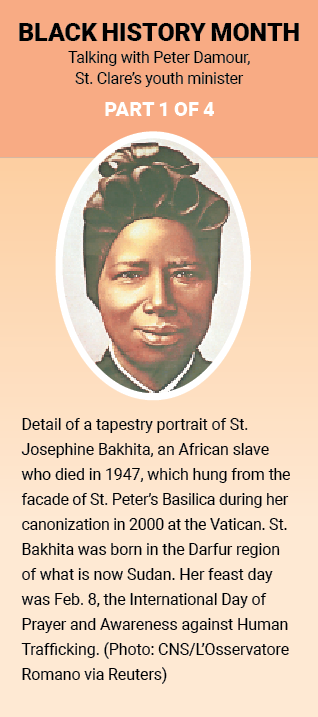Part 1 of 4
Who is St. Josephine Bakhita? The answer is as beautifully complex as the woman, whose feast day is celebrated Feb. 8 — the same day the church acknowledges as the International Day of Prayer and Awareness against Human
Trafficking.
Born in the Darfur region of Southern Sudan in the 1800s, St. Josephine Bakhita was kidnapped when she was 7 years old by Arab slave traders. She was resold several times until she was sold to an Italian consul in 1883. Two years after that, the consul took Josephine to Italy where she became a babysitter to Mimmina Michieli.
It was during that time as a babysitter that Josephine would accompany Mimmina to an Italian institute run by the Canossian sisters. While the young Italian girl was being instructed, Josephine felt drawn to the Catholic Church. By 1890, she was baptized and confirmed, taking the name Josephine. The Canossian Sisters and the patriarch of Venice intervened on her behalf and Josephine was declared free in 1885, since slavery was illegal in Italy. She entered the Institute of St. Magdalene of Canossa in 1893, then made her profession three years later as a nun.
But why is her story important for the church today? Ask St. Clare’s youth minister Peter Damour.
“What’s so important when we talk about our faith is having our young people see that they can relate to their faith. When I talk about holy people or people who lived like them, I use saints as an example. I tap into saints that look like them, too.
“They’ll learn about black history in school, but they can also learn about their faith. It’s important too because in a church where we have a lot of males in leadership and decision making roles, having St. Josephine who was able to come around and help the children at her time, that’s important to show that you can still do extraordinary things with the little that you do.”
